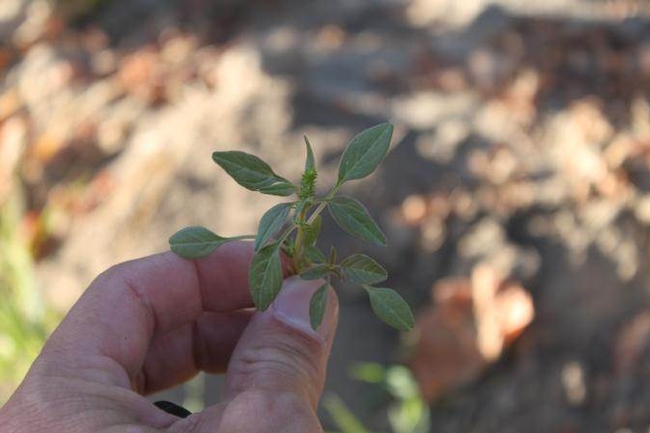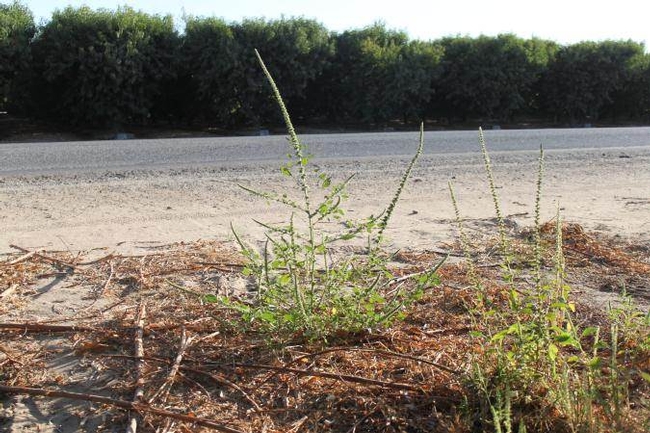Kassim Al-Khatib, Director of the UC-Statewide Integrated Pest Management (UC-IPM) Program, sent a couple links about the identification of Palmer amaranth and comparison to other amaranth (pigweed) species. I thought they were useful and potentially of interest to California weed managers so I thought I'd share:
In this first link, Dr Bill Johnson and Travis Legleiter, weed scientists from Purdue University have a video explanation for helping growers identify Palmer amaranth and explain differences between other related species in Indiana (click here for Purdue Univ. Palmer ID video).
The second link is a direct link to a Kansas State University publication (KSU-S80) entitled "Pigweed Identification: a Pictoral Guide to the Common Pigweeds of the Great Plains". We have several of these common pigweeds in California as well so this ID guide is highly relevent to us.
Palmer amaranth has greatly affected cotton production systems in much of the southeastern U.S. and also can be found in some corn/soybean regions of the Midwest. We have our own issues in California with Palmer amaranth and this weed seems to be becoming much more prevelant in the San Joaquin Valley. We've discussed this species a lot recently in the context of glyphosate resistance (see Lynn's introduction to Palmer amaranth post here) and several weed science groups (UCCE, Fresno State, UCD) are conducting research on the weed.
Proper field scouting and weed ID remains a critical step in any weed management program - hopefully these pigweed ID links will help California weed managers stay ahead of a potentially serious weed problem.
Take care,
Brad

